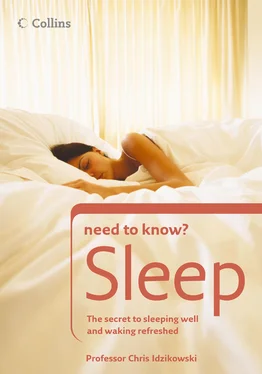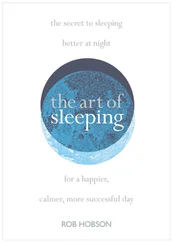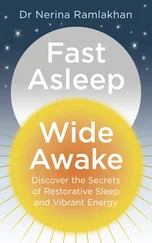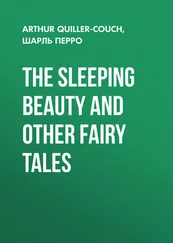For many sleep scientists, REM sleep is the most interesting and exciting of all sleep stages, for this is when dreaming occurs, and is when the brain is most active. In fact, curiously, EEGs taken at this time are more similar to those taken during wakefulness than at other sleep stages. The brain shows increased cerebral metabolism, cerebral blood flow, intracranial pressure and brain temperature, and many parts of the brain that control functions such as heart rate, blood pressure, breathing, body and brain temperature and sweating are less well regulated than at other times. Even sexual organs are aroused and men often have penile erections. In fact, there was a time when REM EEGs were used to determine whether men’s impotence was physical or psychological, though this has all changed in recent years with the introduction of Viagra.
Are you a dreamer?
If you don’t think you dream, try setting your alarm clock at 15-20 minutes earlier than your usual morning wake-up time. This will almost certainly ensure that you will be awoken out of REM sleep. Go to bed preparing yourself to remember what is in your mind when you wake up. When the alarm goes off, think about what has been going through your mind.
Scientists believe we dream during REM sleep, and that the dreams become more vivid as the sleep stage progresses. Most REM sleep occurs towards the end of the night and can sometimes reach its peak in the early morning, (which is why you can often remember dreams clearly just as you wake up). But the memory of the dream usually fades within minutes.
Although he originally trained as a doctor, Sigmund Freud (1856-1939) is best known for his study of the mind, and is often referred to as the father of psychoanalysis. Freud believed that the mind consisted of three main elements: the ego (the conscious self), the superego (the mind’s moral guardian) and the id (psychic and unconscious mental energy), and that the demands of the id, left unchecked during sleep, were expressed in dreams.
In Freud’s psychodynamic theory, dreams symbolized unconscious thoughts and mental processes, and interpreting their meaning was a ‘royal road’ to understanding the subconscious mind. One of Freud’s contemporaries, Carl Jung (1865-1961), formulated the idea of the ‘collective unconscious’ (a reservoir of memories and experiences), his list of the many recurring themes in dreams including: water, being trapped, travelling, running, being chased, death, choking, falling, houses, flying, nudity, being late and sex.
Freud’s influence on psychiatric thought has now largely declined, but his book The Interpretation of Dreams (1900) remains one of the most significant works of the 20th century.
REM sleep has often been described as paradoxical because it has many contradictions. Although EEG readings show that the brain is so active at this time that it may be using even more energy than during wakefulness, the muscles, by contrast, are completely paralyzed, apart from rapid eye movements and the odd, involuntary twitching of fingers. Since vivid dreams also occur at this time, some people believe the muscle paralysis is there to stop the dreams from being physically acted out.
During REM sleep your brain is as active as when you are awake.
Dreaming through the ages
Dreaming has intrigued and fascinated people for thousands of years before the works of Sigmund Freud, and many of the world’s greatest civilizations and religions have used dreams to guide their everyday lives. Let us look at some of the most famous examples below.
An ancient Hindu tale that is still relevant today describes three states of mind: the state of wakefulness (vaiswanara), when a person perceives ‘what is presented to them by their senses’, the state of dreaming sleep (taijasa) ‘which can reflect in the mind what has happened in a person’s past’, and the state of dreamless sleep (prajna) when ‘the veil of unconsciousness envelops thought and knowledge, and the subtle impressions of the mind apparently vanish’.
By around 2000 bc, the ancient Egyptians were already transcribing their dreams on to papyrus. Egyptians believed that dreams brought messages from the gods and that dreaming was the best way of attaining divine revelation. They developed methods for inducing or incubating dreams, including building sanctuaries that had special beds for dreaming.
Sanctuaries and shrines for promoting dreams were also adopted by the Greeks, who in addition had specific dream rituals. Those entering the Shrine of Apollo at Delphi were required to abstain from sex, or eating meat, fish and fowl two days before. Once in the shrine, they made an animal sacrifice to the god from whom they wanted to receive the dream and would then sleep on the skin of the sacrificed animal, sometimes near the statue of the appropriate deity. The Greek god Hypnos was thought to bring sleep to mortals and his son Morpheus was said to send warnings and prophecies to those sleeping in the temples.
The Judeo-Christian tradition also used dreams as a guide to waking behaviour, most notably in the story of Jacob’s dream of the ladder going up to heaven recounted in Genesis, which was seen as a turning point in his spiritual development. Various books from the Old Testament used dreams for guidance – it was assumed that the conventional way for God to communicate with his people was through dreams. Dreams were similarly used in the New Testament; for example, in stories of the Flight into Egypt and the dream of the Magi at the birth of Christ.
Take it to the next level…
• Chronotherapy 180
• Circadian rhythm disorders 139
• Light 38
• Light therapy 178
• Melatonin supplements 178
• Seasonal Affective Disorder (SAD) 17
• The work of sleep clinics 168
Other sources
• For professional sleep research societies, visit www.wfsrs.org
• To read specialist journals on sleep, visit www.journalsleep.org
• For brain basics and disorders, go to www.ninds.nih.gov or www.websciences.org/s ltbr/
• For contemporary discussion and links on sleep, visit www.neuronic.com or read sleep blogs: scienceblogs.com/clock/
In the first century ad, Ignatius of Antioch dreamt of angels singing alternating chants and introduced this antiphonal singing in monastic communities as a consequence. (Ignatius could possibly be described as one of the early sleep researchers as he claimed that all people dreamt and that this could be observed by their movements when asleep!) And in the fourth century, Chrysostom declared that dreams were symbolic reflections of a spiritual world.
The early philosophers had opposing views on dreams. Plato argued that there was a world beyond the physical one and that it was possible to communicate with it through dreams, while Aristotle argued that knowledge was gained through sense and reason and that there were no divine communication pathways of communication – dreams were just the remnants of an overly stimulating wakefulness. The debate still continues…
Читать дальше












